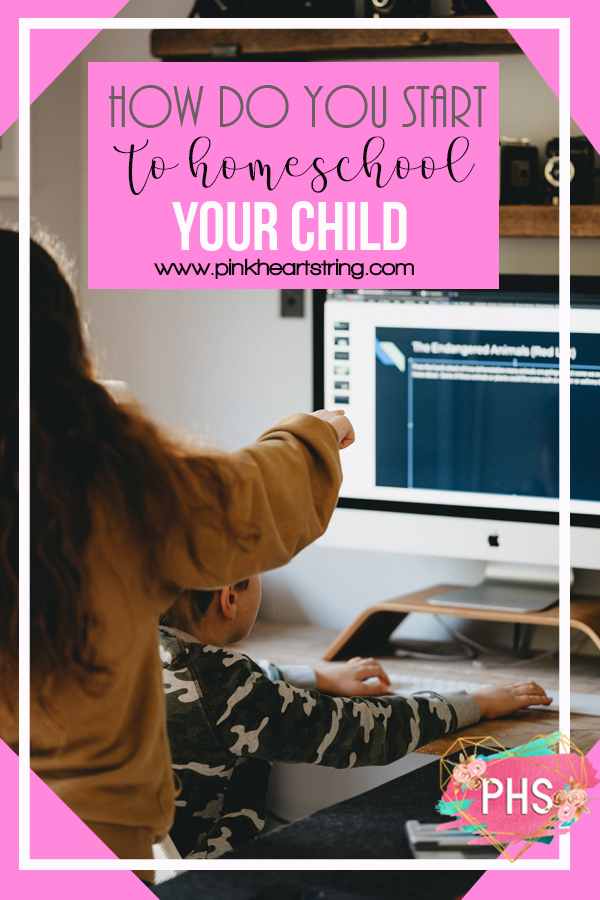Homeschooling is fast becoming a widely popular option for parents across the globe. While the idea might seem overwhelming, this educational option provides you and your child a flexible and positive learning experience.
Many families choose to homeschool their children due to a variety of reasons, including:
- Bullying: Statistics from the 2017 School Crime Supplement showed 20 percent of students between the ages of 12 and 18 had been victims of bullying.
- Worldview: Having the desire to instill a particular perspective of the world or universe leads many to choose to homeschool.
- Passion: With more time to spend exploring different activities, children who are homeschooled tend to have more opportunities to engage and pursue their passions.
- School Safety: Homeschooling your child lets you educate them about violence as well as limit their exposure to illegal substances, threats, and weapons. Promoting emotional and physical safety can help your child perform well academically.
How do you start homeschooling your child?
One of the most important things to know about homeschooling is that it uses an entirely different approach to education. Lessons are tailored specifically to suit your child’s needs and pace. Going in underprepared can lead some homeschool experiences to go badly. The better you understand what will be asked of you, the more effective the learning method would be.
We aim to guide you through some of the issues you may encounter as you consider homeschooling your child. Knowing what to expect can prepare you for the advantages and disadvantages of choosing this educational method. We have developed a detailed guide to aid you in your decision.
How to homeschool effectively
The rewards of homeschooling are endless. Parents are encouraged to begin researching details about the various routes they can take to maximize the advantages of homeschooling. Visiting your local library, reading books and guides, and talking to people who have experienced homeschooling may help set your expectations.
Joining homeschooling groups in your area, or even in social media, could help you discover different at-home teaching habits and age-appropriate activities your child may want to participate in.
Creating a homeschooling space in your home will also help eliminate potential distractions that could affect your child’s learning progress. An empty wall could quickly become a blackboard or a bulletin board where schedules, calendars, and completed work are posted. Investing in storage boxes, bookshelves, or cabinets would also be useful for keeping textbooks and supplies organized.

Advantages of homeschooling
- Complete Freedom: One of the reasons why many parents choose to homeschool is the amount of flexibility it offers. Having the power to choose the curriculum means being able to plan how to teach and when to teach a lesson. The system also allows parents to spend time developing a child’s interest and incorporating a value-system.
- Opportunities: Similar to having complete freedom, parents and children who are enrolled in a homeschool program do not have a set routine to follow, unlike those enrolled in a traditional school setting. The educational method offers more chances to take vacations or change learning schedules.
- Learning Environment: In a classroom of 20 to 30 children, students can encounter a range of distractions. At home, you and your child can move through the material at your own pace. The quality of education increases as your child can learn in a one-on-one environment where their learning style is considered.
- Developing Bonds: Homeschooling can help you foster a close relationship with your child. It also ensures you do not miss pivotal moments in their lives. Having more time also allows your child to join support groups, associations, field trips, programs, and workshops.
- Success Rates: A common misconception people have about homeschooling is that students would face more difficulties getting into colleges. However, top universities do recruit homeschool students due to their higher success rates in college. Choosing homeschool as your child’s learning method can help them stand out.
- Sense of Responsibility: Students who are homeschooled are most likely to hold themselves accountable for their actions. Giving them a choice to complete their assignments on their own time develops their sense of responsibility. Older homeschoolers still have the opportunity to start working and earning money while still studying.
Disadvantages of homeschooling
- Anxiety: In the first months of homeschooling, parents would often find themselves doubting their ability to teach their child. Indeed, the idea that everything is in your hands might seem overwhelming. The concern is very much valid as it only indicates that you want to give your child the best possible education.
- Transition: The process of transitioning from a traditional setting to homeschool can be stressful. There are a lot of things parents need to figure out: curriculum, schedules, and activities. Additionally, your child would also undergo a difficult transition period from a classroom mindset to accepting the freedom to customize their learning experience.
- Working From Home: Parents who are thinking of choosing homeschool may have to decide to move from having two incomes to one or exploring the idea of remote work.
- Cost: Homeschooling your child may cost more depending on your curriculum choices. However, there are many free resources available, including unit study supplements and a trip to the library.
What do I need to homeschool my child?

With homeschooling, the supplies a child would need are significantly fewer than those who are in a traditional school setting. There are many free resources available online. However, having a few supplies on hand would help make teaching your child easier.
1. Planner. Having a great homeschool planner can make your child’s entire school year easier. The planner helps you organize and track all the activities and lessons your child has for the whole year.
While finding the right homeschool planner can be tricky, there are tons of free printable planners available on the internet.
2. Folders. File folders serve as a fantastic way to organize your lessons. They can also help you create file folder games as well as store your children’s artworks, literary masterpieces, and other exciting projects.
3. Post-Its. These colorful memo pads are an easy way to leave reminders and mark a spot in your children’s textbook. These sticky notes take up very little space, making them the perfect organization tool.
4. Printer. Though not a necessity, having a printer at home can help you save a lot of time. With thousands of free printable homeschool resources available online, the ability to whip out copies of a worksheet or lesson could help make your teaching experience a breeze.
How much does it cost to homeschool my child?
In the United States, the average parents spend up to $600 per year, per child, on homeschooling curriculum and materials. However, the price mainly depends on the state you live in. According to a report published by the National Home Education Research Institute, some states saw a 3% decline in homeschooling rates between 2012 and 2016. Others saw an increase of up to 94% in homeschooling rates.
In the Philippines, homeschooling costs between 2,000 php to 60,000 php per year, per child. Parents can choose to enroll their child in institutions accredited by the Department of Education, or take the independent route and use their preferred curricula or resources as lesson materials.
While homeschooling eliminates the cost of school uniforms and miscellaneous fees, there would still be fees to pay for curriculums, programs, and materials. Here are some of the most common expenses and ways you can save money on each one.
Curriculum
The homeschooling curriculum would likely be the most significant expense for people who choose this learning method. There are many ways to save money, including creating your own curriculum or using online resources.
Many opt to use Khan Academy, a non-profit that provides free education to children around the world. While it is entirely free, it does not offer a full curriculum.
Others buy used curriculum that could save over 50% or more off retail prices. Listing sites such as Homeschool Classifieds, eBay and Craiglist offer thousands of used curricula.
Libraries also carry textbooks and DVDs that can be used to supplement a homeschool curriculum. Some even offer special programs that allow homeschoolers to check out books and materials twice as long as most members.

School Supplies
While homeschooling saves you the cost of children’s clothing and pitching it for classroom supplies and miscellaneous expenses, buying decorations for your learning space may cause a financial setback.
Save tons of money by buying used educational equipment such as globes and microscopes from Craiglist, eBay, or your local thrift stores.
You could also turn to a do-it-yourself approach on some decorations, such as a model of the solar system, by using styrofoam balls, paint, and wooden sticks.
Activities
Outdoor activities are an integral part of homeschooling. Children who are enrolled under this learning method are encouraged to take trips to the zoo, planetarium, museum, and local historical sites. This system allows for a more hands-on approach to learning.
The cost of these trips can add up very quickly. If you’re running on a tight budget, you could save by checking local deals or free attractions in your area. Some community organizations also offer free educational tours.
Adding in extra-curricular activities are also a great way to expose your child to social interactions. Community and recreation centers often offer free or inexpensive classes, including arts, dance, music lessons, and sports.
Choosing the Best Homeschooling Curriculum

Finding a homeschool curriculum that best fits your family is the key to succeeding with this educational method. It is vital that the curriculum you choose would address the needs of your child, yourself, and your situation.
1. Choosing for your child.
Children come in different ages, levels of development, and preferences. Some children may find more motivation to learn by creating and making things, while others may prefer reading or socializing with other people.
If your child does not take well to typical schoolwork, you could try interest-led learning. This system requires you to choose resources that support the interests of your child, which might mean selecting a non-traditional homeschool curriculum and exploring different learning styles, including visual learning, auditory learning.
2. Choosing for yourself.
Some parents choose to outsource part of their children’s learning due to time constraints and other factors. When choosing a curriculum, it is always important to consider how much time you have and how much first-hand assistance you can provide your child. Other things to consider include:
Your philosophy of education
A preference for an open-ended and holistic learning experience
Your ability to help your child learn through the high school years
Personal growth and change
3. Choosing for your situation.
The success of homeschooling depends on how you acknowledge and work with your circumstances. The situation may involve problems at school or your child’s personal preference.
Some parents enroll their child in a homeschool program to solve a problem at school. You might be an accidental homeschooler, who never intended to opt out of traditional school settings, or a short-term homeschooler, who wants to return their children to school after a period of homeschooling.
If your child has been diagnosed with attention deficit disorder (ADD), attention deficit hyperactivity disorder (ADHD), or is having trouble meeting public education standards, homeschooling may be one way to accommodate their personal and educational needs.

How do I know if homeschooling is right for my child?
For homeschooling families, the lines between grade levels often get blurred. At times, parents face a tough time knowing whether their child is ready to take on the challenges of learning in a non-traditional setting. If you’re wondering whether it is time to start their homeschool journey, here are some things that might help you decide.
Academic Struggles: Traditional schools usually adapt a curriculum based on grade level. However, some children struggle to keep up in some subject but do exceptionally well in others. In a homeschooling situation, parents can customize the curriculum to match their child’s academic abilities and remove the struggles presented by a restrictive course of study.
Special Needs: Children with sensory impairments or learning disabilities may feel isolated within a regular school. Consider homeschooling if you see your special-needs child having difficulties thriving in a traditional school program despite having accommodations in place.
Active Learning: Some children have a hard time sitting still in a classroom due to ADHD. Others also gravitate more to a dynamic learning style. Homeschool allows you and your child the flexibility and the opportunity to adapt to their learning style by organizing tours at arts or science museums, theaters, nature preserves, or planetariums.
Social Anxiety: A child with social anxiety or social phobia may find it hard to attend a regular school. Homeschooling offers a safe family environment where your child has the freedom to learn without feeling the intense and persistent fear of being watched by others.
